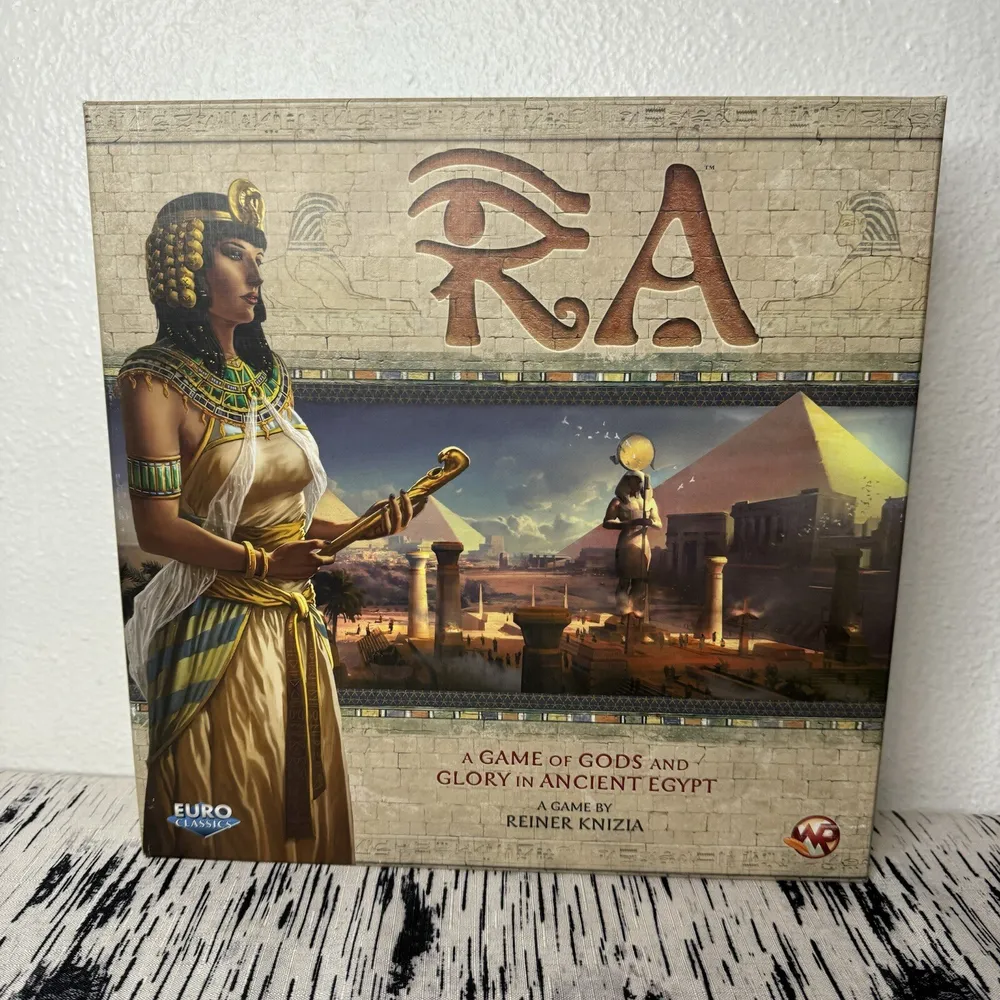Ra (1999)
Ra
Ra is a board game designed by Reiner Knizia and themed around Ra, the sun-god of Heliopolis in ancient Egyptian culture. It was published in 1999 by Alea in Germany.
Why is Ra Popular?
Ra is widely considered one of the greatest games created by one of the greatest board game designers. It is one of three auction games designed by Knizia, the others being Medici and Modern Art. Ra is significant because it is a classic auction game that has been enjoyed by many players for over two decades.
Game Components of Ra
How To Setup Ra
To set up Ra, begin by placing the game board in the middle of the playing area. Shuffle the Ra tiles and draw a number of them based on the number of players. Each player chooses a player board and places it within reach. Distribute the bid tokens and sun tokens according to the rules. The scoreboard is also placed within reach of all players. The game is divided into three epochs, each ending with a sun token, and the setup ensures that all components are ready for the start of each epoch.
Gameplay Mechanics and Game Objective
Player Experience
Ra offers a dynamic and strategic experience, where players must balance their bids carefully to acquire valuable tiles while managing their resources. The game requires a mix of short-term and long-term planning, as players need to think about which tiles to bid on in the current epoch and how these will impact their scoring in the future.
Pros
Cons
Personal Thoughts on Ra
Ra is a game that is best suited for experienced board game enthusiasts who enjoy strategic depth and complex mechanics. It is not a game for casual players due to its complexity and the need for careful planning. However, for those who appreciate auction mechanics and set collection, Ra offers a rich and rewarding experience that challenges players to balance short-term gains with long-term strategy.
We are supported by our audience. When you purchase through links on our site, we may earn an affiliate commission, at no extra cost for you. Learn more.

